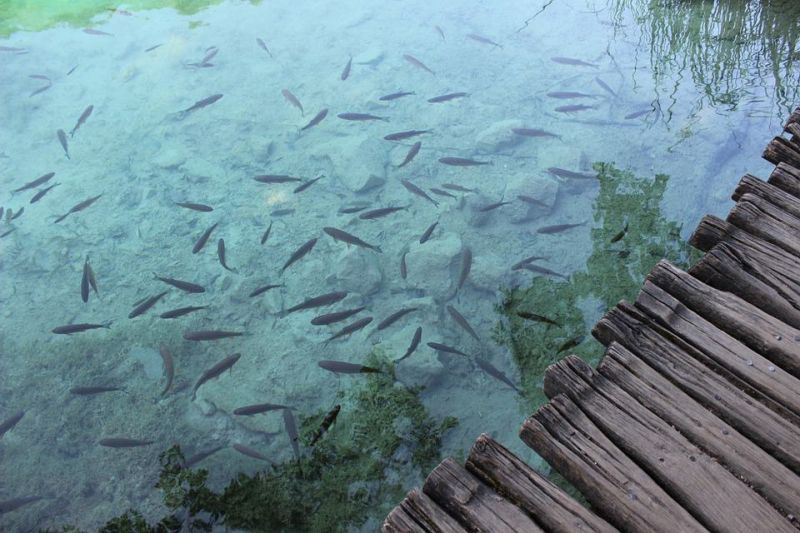Monitor Climate Change, Not Predators, to Protect Lake Diversity: Study
Published on by Water Network Research, Official research team of The Water Network in Academic
Climate change and other environmental factors are more threatening to fish diversity than predators, according to new research from the University of Guelph.
It is a surprising and important finding, as humans rely upon freshwater lakes for more than one-fifth of their protein needs worldwide, says lead author Prof. Andrew MacDougall in U of G’s Department of Integrative Biology.

Climate change and other environmental factors are more threatening to fish diversity than predators, according to new research from the University of Guelph. Source: University of Guelph
“Freshwater is a huge source of food for people, including Ontario’s Great Lakes,” he said.
Lakes, rivers and streams cover less than one per cent of Earth’s surface but provide 12 per cent of human fish consumption, MacDougall said.
The findings, published this month in the journal Nature Communications, may offer ideas for resource managers to better protect all-important species diversity in lakes around the world, MacDougall said.
His international research team included U of G biologist Prof. Kevin McCann and scientists in Canada, Switzerland, Sweden, Australia, the United States and Japan.
The research team modelled prey-predator interactions and environmental factors, such as lake size, temperature and water quality.
The scientists used information compiled earlier by the Ontario government on more than 700 lakes in the Great Lakes watershed.
The team found that species diversity depends more on “bottom-up” environmental factors than on “top-down” interactions, or which fish species eats what – a result that surprised MacDougall.
He said food chain interactions among organisms are still important.
“All lakes have big predators, and predators always kill lots of fish that they consume,” said MacDougall. “But the strength and degree of the interactions seems to depend fully on environment. The interactions are never independent of lake conditions.”
He said resource managers need to pay attention to physical conditions, including lake warming caused by climate change and water quality impacts of human activities such as farming.
The authors say the paper’s findings set a baseline for species diversity in southern Ontario lakes. That will help resource managers monitor or predict those effects as well as the impacts of other changes such as introduction of invasive species.
Many freshwater fish species in Canada and abroad are already endangered by human-caused environmental changes, said McCann. “There’s a looming threat of loss of species.”
He said the study shows how so-called big data can help detect patterns in complicated ecosystems and how precision agriculture – including more targeted use of crop fertilizers — may lessen pollutants entering lakes and streams.
Big data and precision agriculture are key aspects of the University’s Food from Thought project, which aims to help find sustainable ways to feed Earth’s growing human population. McCann co-leads that project, launched in 2016.
U of G researchers in the new study were supported by funding from the Natural Sciences and Engineering Research Council and from the Canada First Excellence Research Fund for the Food from Thought project.
Source: University of Guelph
Media
Taxonomy
- Ecosystem Management
- Water Monitoring
- Ecosystem Management
- Biodiversity
- Water Monitoring
- Climate Change
- Climate Change Adaptation
- Climate Change Resilience
- Monitoring & Control
1 Comment
-
"The interaction of the food chain between organisms is still important." Not just important, it is of paramount importance.
As a result of human activity, the functions of the main part of the water have changed. Instead of keeping the biota and cleaning it, by supplying it with moisture, mineral and organic substances, the water comes with precipitation and returns to the atmosphere by artificial evaporation from arable lands, asphalt, reservoirs, dumps. In total, people took from nature 63% of the inhabited earth for these purposes, each hectare of which contained 20 tons of underground living creatures. These are microbes, worms, and so on living creatures that, in symbiosis with plants and terrestrial populations, absorb moisture, transform in food chains and exhale purely individual pairs, which we call natural or organic vapors. Human intervention in the circulation of water reduces food chains, and water from asphalt and other destroyed areas evaporates immediately after precipitation. We call these evaporation artificial. More artificial fumes are produced by industry and utilities around the world. The total artificial evaporation creates unprecedented volumes of water in the atmosphere, which destroyed the mechanism of atmospheric phenomena, which has been improved for millions of years. The cyclicity, massiveness and zones of precipitation have changed.
Almost the whole of Europe has "ennobled" its territories with arable land, water reservoirs, and cities.
Only the all-round return to nature of organic fumes and the reduction of artificial fumes can save the world.
Among the measures to reduce artificial fumes should be the total total water saving in everyday life by every person, every enterprise of all branches of agriculture and industry. Reconstruction of all agriculture with the introduction of shallow plowing, drip irrigation, other ways to reduce water consumption.
One of the most capacious in artificial evaporation are man-made reservoirs. Now the construction of new hydroelectric power stations with the flooding of large areas is increasing everywhere. Full stop of projects and construction of new reservoirs, gradual liquidation of existing ones is necessary. There are interesting technical solutions for preserving the generation of electricity without dams and water accumulation.